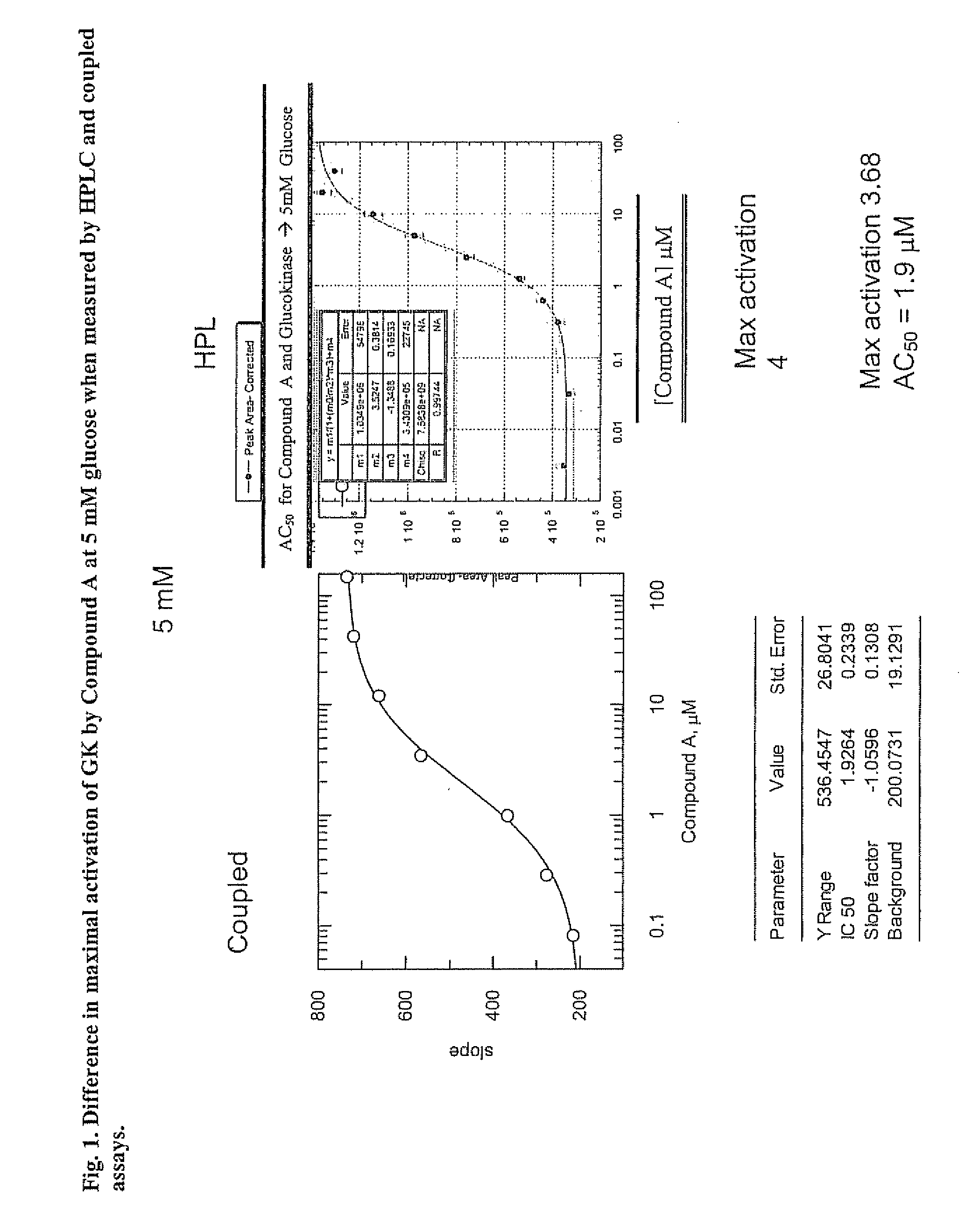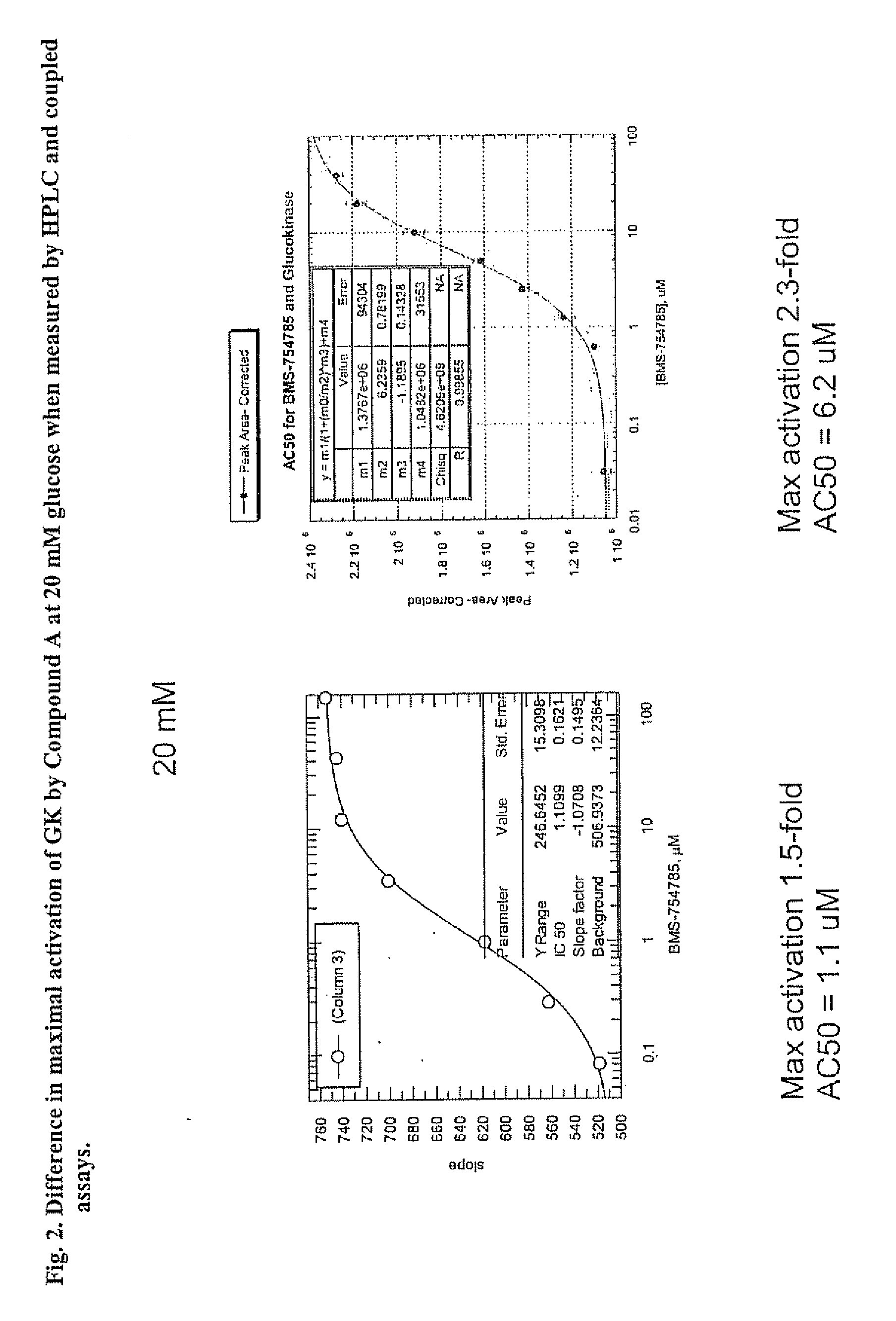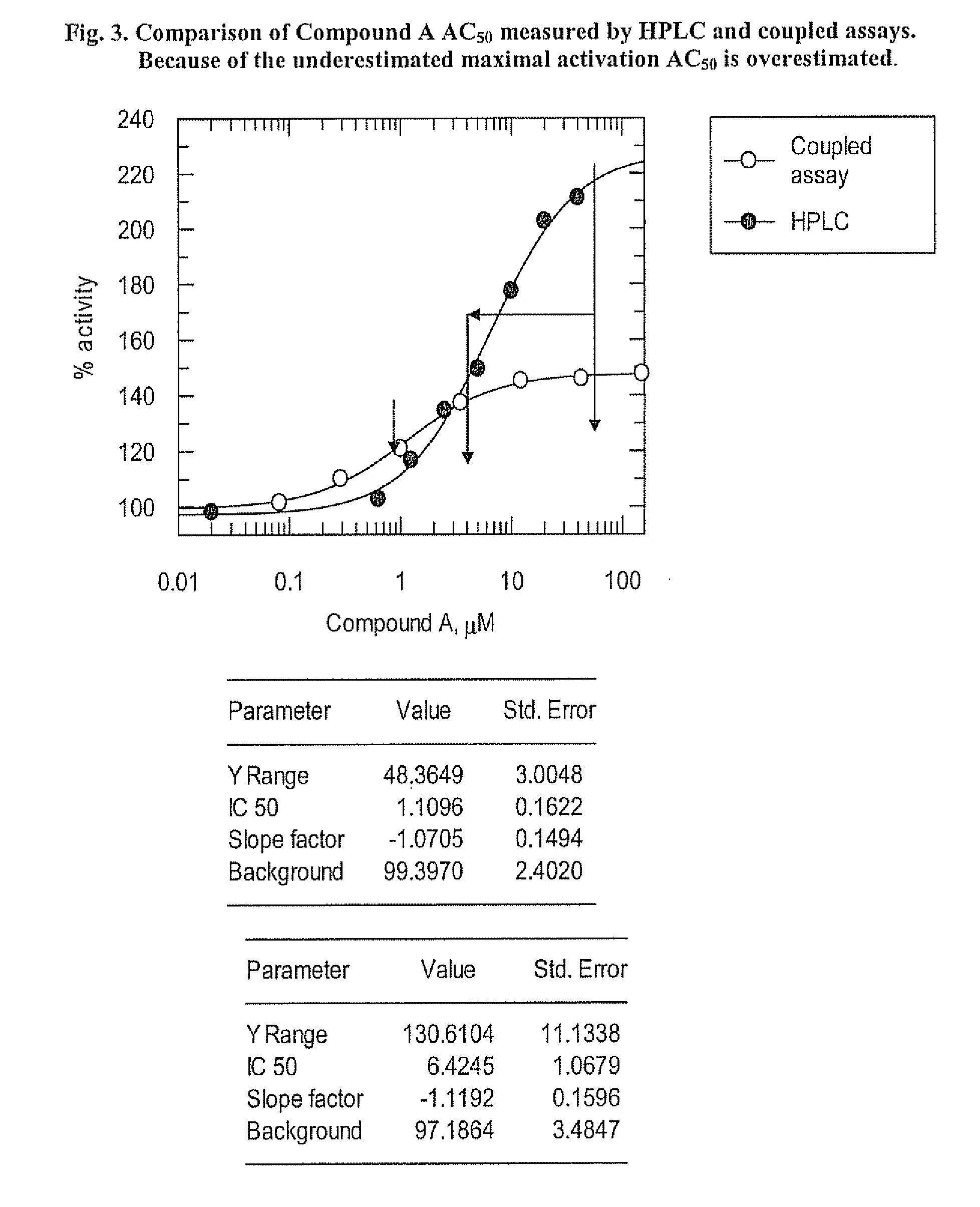Glucokinase activity assays for measuring kinetic and activation parameters
- Summary
- Abstract
- Description
- Claims
- Application Information
AI Technical Summary
Benefits of technology
Problems solved by technology
Method used
Image
Examples
example 1
HPLC-Based ADP Detection as a Measure Of GK Activity
[0041] As described above, GK, when activated, produces ADP if effective concentrations of glucose and ATP are available for use by GK to initiate the steps in glucose metabolism. The HPLC-based assay involves the measurement of ADP production by GK.
[0042] Human full-length recombinant GK was used to measure the activation parameters of GK in an HPLC-based assay. Recombinant GK (15 nM), along with reaction solutions containing 25 mM Hepes (pH 7.1), 1 mM DTT (freshly added daily), and various concentrations of glucose were mixed with 5 mM ATP containing 6 mM MgCl2 (pH adjusted) to initiate the GK reaction in Eppendorf tubes. GK modulators (e.g., activators such as Compound A) were introduced as 100% DMSO stock solutions and the final DMSO concentration was 5%. When GK modulators were added to the reaction mixtures, appropriate controls using the DMSO vehicle were included.
[0043] To establish a time course for the in vitro GK reac...
example 2
Direct Glucose-6-Phosphate Capture by Filtration Using an Ion-Exchange Resin
[0050] In addition to the HPLC-based ADP measurement assay described in Example 1, disclosed herein is a filtration based assay for measurement of the amount of G-6-P produced by activated GK.
[0051] Human full-length recombinant GK was used to measure the activation of GK. Human full-length GK (15 nM) was incubated with various concentrations of glucose in the range from 0.33 to 50 mM in the presence of tritiated glucose (3H-glucose [6-3H], 0.33 μCi) in 96 well microtiter plates. To initiate the GK reaction, Mg-ATP (3 mM final) was added to the protein in buffer, under the final buffer conditions of 25 mM HEPES, pH 7.1, containing 1 mM DTT and 5% DMSO. The total reaction volume was 110 μl. The reaction was allowed to proceed for ten minutes (i.e., the linear portion of the reaction) and was then quenched with 100 mM formic acid (1:1). A 200 μl aliquot of the quenched reaction products was then transferred ...
example 3
Uncoupled Detection of G-6-P Using a Tandem Assay
[0055] A third assay described herein useful for measuring GK activity is a tandem assay. A particularly useful feature of the tandem assay is the ability to use the assay in a high throughput screen for GK modulators.
[0056] Purified human recombinant GK was used to measure the activation of GK activity by glucose and a GK activator (Compound “C”) in the tandem assay. A suitable vehicle (for instance 24% DMSO in pH 7.25 Tris buffer), with or without (control) a GK modulator of interest was incubated with GK (50 μl of a 24 nM stock solution) over a range of concentrations of glucose (for instance from 0.32 to 80 mM) for 30 minutes in a 96-well PCR plate (10 μl). The GK reaction was initiated by addition of Mg-ATP (20 μl). The solution used comprised 12 mM ATP and 16 mM MgCl2. The final assay conditions were 25 mM Tris, pH 7.25, 1 mM DTT and 3% DMSO, 15 nM GK, 3 mM ATP and 4 mM MgCl2. Glucose stock solution (IM) was diluted to generat...
PUM
 Login to View More
Login to View More Abstract
Description
Claims
Application Information
 Login to View More
Login to View More - R&D
- Intellectual Property
- Life Sciences
- Materials
- Tech Scout
- Unparalleled Data Quality
- Higher Quality Content
- 60% Fewer Hallucinations
Browse by: Latest US Patents, China's latest patents, Technical Efficacy Thesaurus, Application Domain, Technology Topic, Popular Technical Reports.
© 2025 PatSnap. All rights reserved.Legal|Privacy policy|Modern Slavery Act Transparency Statement|Sitemap|About US| Contact US: help@patsnap.com



